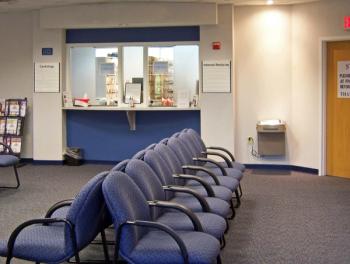
Kidneys infected with hepatitis C safe to transplant
Recipients of hepatitis C-infected kidneys treated with direct-acting antiviral agents are disease-free one year post-transplant.
Kidneys infected with hepatitis C virus (HCV) can be successfully transplanted into patients without HCV infections, according to a new study.
Given the high efficacy and safety of direct-acting antiviral (DAA) treatments for HCV, discarded kidneys from HCV-infected donors may be a neglected public health resource.
About 500 HCV-positive kidneys are discarded from organ donors in the United States every year. Hundreds more may never make it to a recipient because some organizations don’t procure the kidneys due to the lack of a suitable recipient.
"Right now, most of the usable organs from donors with hepatitis C are discarded because there are very few hepatitis C-positive recipients on the waiting list. Figuring out how to use these kidneys is a way to do more transplants and save more lives,” said senior author Niraj Desai, MD, assistant professor of surgery at Johns Hopkins University School of Medicine.
The researchers published their
New DAAs cure more than 95 percent of all HCV patients and carry few side effects. Previously organs, including kidneys, from HCV-positive people were considered too high-risk to transplant into patients without the virus.
Desai and colleagues conducted a small, open-label, single-center nonrandomized trial. They approached patients over age 50 awaiting kidney transplants who had no previous transplants and no available living donors, and were negative for HCV, as well as HIV and hepatitis B virus.
Ten patients with average age of 71 years agreed to receive HCV-positive kidneys. They had been on the transplant waiting list an average of 4 months. All donor kidneys were recovered from donors aged 13 through 50, tested positive for HCV, and showed no evidence of kidney disease.
All recipients received a dose of DAAs immediately before transplantation. Recipients of kidneys from donors with genotype 1 infection continued DAA therapy for 12 weeks after transplantation. Those who received organs from donors with genotype 2 or 3 infection had sofosbuvir 400 mg added on during those 12 weeks of DAA therapy.
In 5 of the kidney recipients, no hepatitis C RNA was detected in their blood. In the other patients, low levels of the virus were detected shortly after transplant, but then became undetectable within days or one week. No recipients developed any clinical signs of chronic HCV infection.
In addition, the kidneys functioned well. All patients are at least one year out from their transplant and doing well, said Desai. Pre- and post-transplantation HCV treatment was safe and prevented chronic HCV infection in the kidney transplant recipients, he said.
“If confirmed in larger studies, this strategy should markedly expand organ options and reduce mortality for kidney transplant candidates without HCV infection,” said Desai. If the success of the transplants continues in a larger, multicenter trial, it could pave the way for other HCV-positive organs, including hearts and livers, to be transplanted as well.
“These 10 kidneys we used are 10 kidneys that would not have been transplanted outside of this study. They would have been discarded,” said Desai.
Newsletter
Stay informed and empowered with Medical Economics enewsletter, delivering expert insights, financial strategies, practice management tips and technology trends — tailored for today’s physicians.














